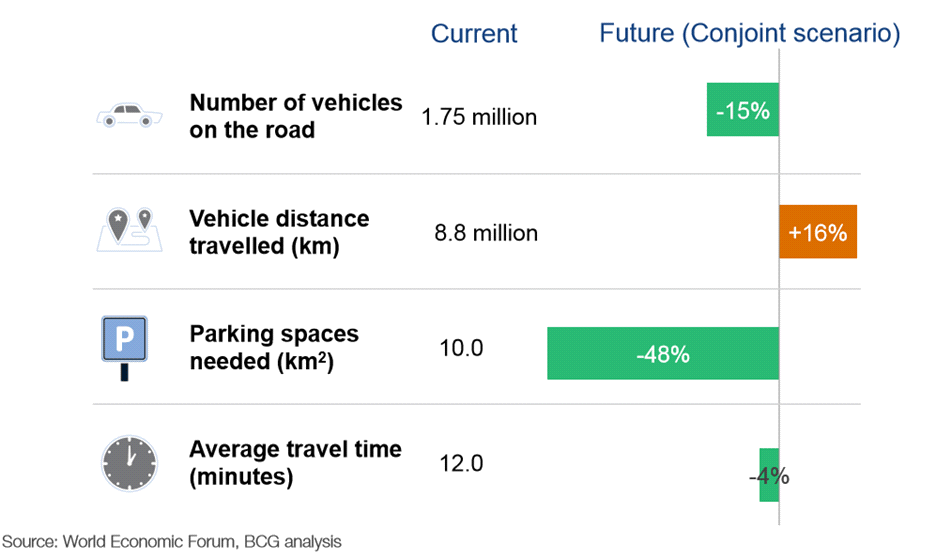Study offers insight and guidance to help both policy-makers and mobility providers reshape urban mobility systems into new versions that are safer, cleaner and more inclusive.
Boston, Massachusetts, United States
Reshaping Urban Mobility with Autonomous Vehicles Lessons from the City of Boston
Summary Information
The World Economic Forum and The Boston Consulting Group (BCG) partnered with the City of Boston to assess the impact of autonomous vehicles (AVs) in the city, to catalyze testing of AVs there and to strategize how the city could foster this technology to achieve its mobility goals. Three waves of consumer research supplemented their collaboration with the City of Boston:
- In 2015, 5,500 consumers in 27 cities around the world (one of which was Boston) were surveyed to measure interest in AVs. Approximately 60 percent of respondents indicated that they would ride in an AV.
- In 2016, a series of detailed focus groups was conducted with residents of the Greater Boston area to understand Bostonians’ starting point concerning mobility and AVs in their city.
- In 2017, a large-scale conjoint analysis was conducted to forecast the penetration of several types of AVs in Boston’s future modal mix. The results of the conjoint analysis – including the projected modal mix of personal vehicles, taxis, private AVs and shared AVs – was then used as input for a sophisticated traffic simulation model of the entire city of Boston.
 Methodology
Methodology
A granular approach was taken for the agent-based traffic simulation that included vehicle-to-vehicle interaction and modelled each vehicle’s behavior – for example, how long a car waits in an intersection before making a left turn. The simulation looked at a revolutionary AV adoption scenario that assumed no personal cars, and an evolutionary AV adoption scenario that assumed reduction of personal cars by one-third. The goal was to determine the impact on the number of vehicles, distance travelled, parking spaces needed and overall travel time. Built by BCG’s advanced analytics arm BCG GAMMA, the simulation ran in near real time as it took about 20 hours to simulate 24 hours of traffic. Features of the simulation included a large geographical area, 2 million trips and more than 600,000 vehicles.
Findings
- Shared AVs will reduce the number of vehicles on the streets and reduce overall travel times across the city. The findings showed that the number of vehicles on the road will decrease by 15 percent while the total number of miles travelled will increase by 16 percent. However, travel time will improve by just 4 percent on average – not as dramatic as other studies have forecast, but still an improvement.
- Introducing shared AVs will worsen congestion in the downtown area, mostly because these vehicles will be chosen as substitutes for short public transportation trips. Travel time will increase by 5.5 percent in downtown Boston. In Allston, a neighborhood outside the city’s core, mobility-on-demand will mainly replace the use of personal cars rather than mass transit, and travel time will decrease by 12.1 percent.
- With the new modal mix, Boston will require roughly half as many parking spots (a reduction of 48 percent is estimated to occur), including those on streets and in parking structures. AVs present an opportunity to rethink the overall design of the city’s streets.
- Local governments hold the key to influencing these results because they have the power to implement the right policies and incentives. The greatest effects are likely to come from occupancy-based pricing schemes, in which financial incentives discourage single-occupancy rides. This measure could improve citywide travel time by 15 percent.
